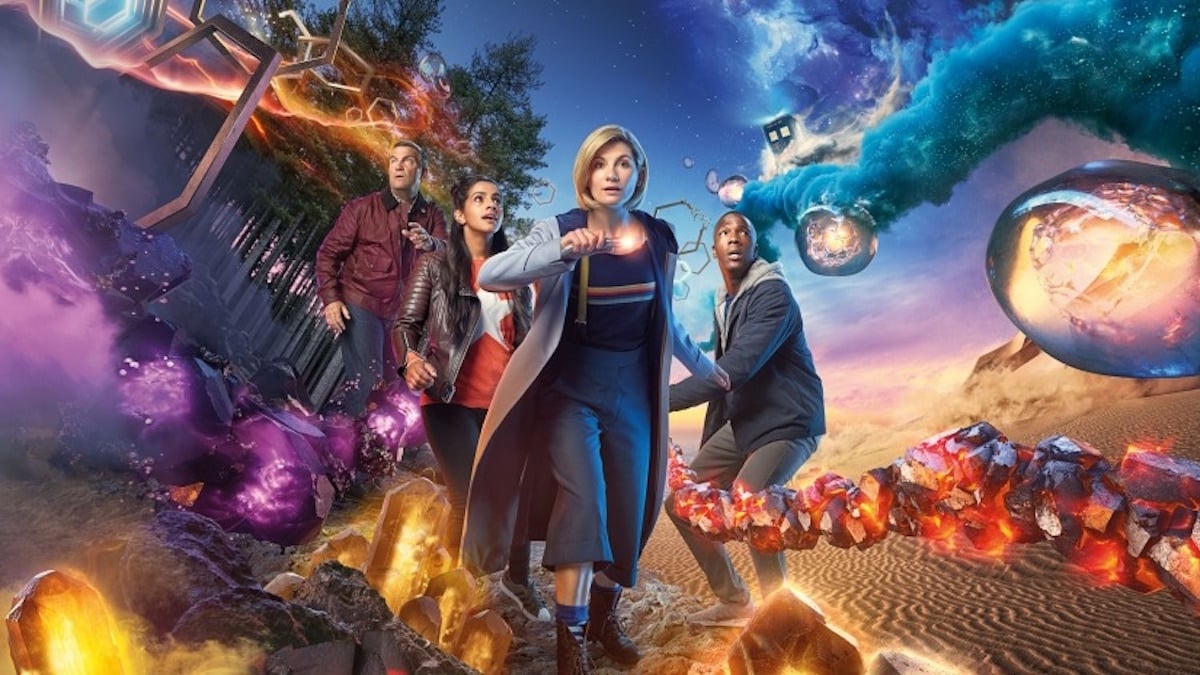**Spoilers for Doctor Who episode “The Tsuranga Conundrum.”**
It wouldn’t be Doctor Who if there weren’t an underlying message to the episode. Every good episode of the series seems silly on the surface, but still has an everlasting impact on us. Look at episodes like “The Girl in the Fireplace,” where masked aliens torment a party and, in the end, it has us feeling for Madame de Pompadour and her station in life.
This episode features the Pting, a fictional little monster who is more adorable than terrifying, but also he wants everyone dead, so maybe he isn’t too cute. “The Tsuranga Conundrum” is, at its core, a typical episode of Doctor Who. The Doctor and her friends are trapped on a ship that’s under attack by an alien race, and they have to find a way to survive or risk dying in deep space.
But, like most of the episodes of this nature, it’s the underlying message that resonates. The vessel the Doctor wakes up on with Graham, Ryan, and Yaz is a hospital transport, taking them to a planet that’s going to make sure they’re in perfect health (after a bomb went off while they were on a junkyard planet).
Mainly concerned with finding her TARDIS, the Doctor is reckless and willing to sacrifice the entire ship to get back to the planet they were found on. Once the Doctor wakes up, she rushes to the control room to try to turn the ship around, only to be confronted with an alien attaching itself to the vessel. “You’re being hostile and selfish,” Astos, a medic onboard, says to the Doctor and, in that one line, summarizes the problem with the Doctor in almost every scenario she finds herself in.
While we’re still learning about the Thirteenth Doctor, she has the same tendencies that have plagued her past selves. She can be brash, take people to planets that can get them killed, and does what she wants, when she wants to do it. The difference is that Thirteen seems to have a sense of self that no other Doctor before her has had. She knows the danger she brings and, while still reacting as the Doctor, she manages to protect those near her.
When the Doctor and Astos go to investigate, Astos makes a mistake and gets trapped in an escape pod that’s set to blow up. Paging his fellow medic, he says something to Mabli that brings out a new tone for the show. “You can do this, Mabli. You’re good enough; you have to believe in yourself,” Astos says before his untimely death.
This brings up a good point about this series now: Doctor Who is changing the tides. Sure, it has always been inspirational and about what people can do, but the fact that this episode featured not one or two but, rather, five different women saving the day, all of different ages and races? That’s incredible!
Most the episode focused on trying to catch the Pting, and if you focus on that, you’ll miss the incredible exploration of different familial relationships that is the secondary storyline. Graham and Ryan don’t really have their moment (something that could have driven home the family aspect), but Ryan does talk with Yaz about the death of his mother and his relationship with his estranged father.
Yoss, a man who is pregnant with his son, spends the entire episode expressing his fears of fatherhood and how he isn’t cut out for it. (He hails from a planet where men give birth to boys and women give birth to girls, and honestly, why aren’t humans that advanced?) In the end, he feels a connection to his son and names him Avocado, even though Graham and Ryan thought the baby would be named after them.
Two siblings, Eve and Durkas Cicero, bicker as siblings do, and in the end, when Eve must sacrifice herself to save the ship, she and Durkas finally share a moment talking about how much they mean to one another, a scene that truly hits you if you have a brother/sister relationship as those two do. (I often don’t tell my own brothers how much they mean to me, as Durkas and Eve pointed out to each other.)
In the end, Eve’s funeral moment comes when the ship finally makes it to the planet, and they’re waiting to be let go. The group stands together, saying a prayer that everyone (except the humans) understand, and it’s a moment that drives home the real message that “The Tsuranga Conundrum” provides for us.
May the saints of all the stars and constellations bring you hope, as they guide you out of the dark and into the light, on this voyage and the next, and all the journeys still to come for now and evermore.
(images: BBC)
Want more stories like this? Become a subscriber and support the site!
—The Mary Sue has a strict comment policy that forbids, but is not limited to, personal insults toward anyone, hate speech, and trolling.—










Published: Nov 5, 2018 04:33 pm